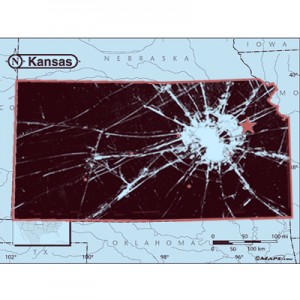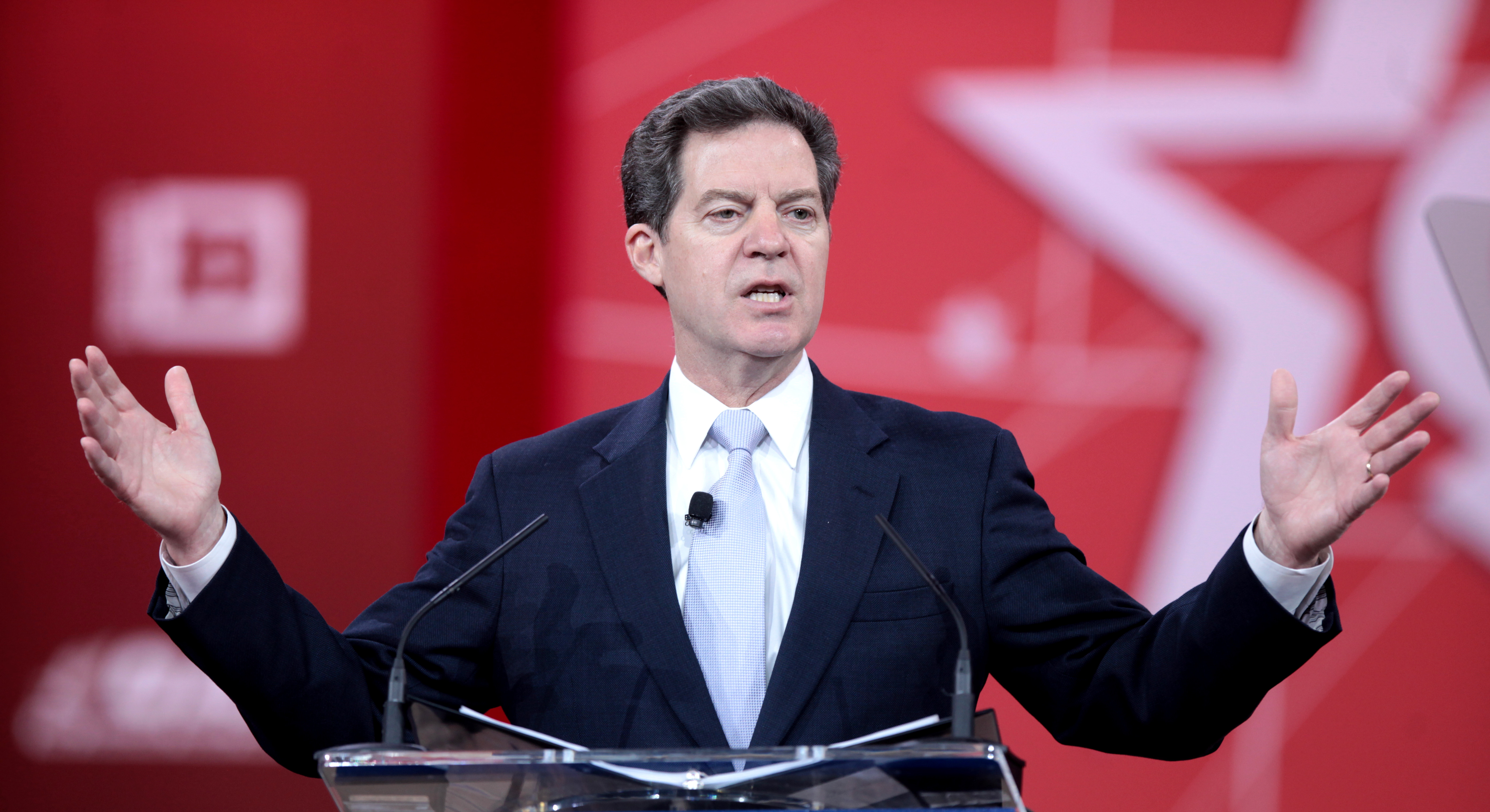Sam Brownback, the Republican governor of Kansas, expected to waltz into reelection, but recent polls showing his Democratic opponent Paul Davis leading by 4 points have raised doubts about Brownback’s chances. The GOP currently holds 32 seats in the State Senate to the Democrats’ 8 and 93 seats in the State House to the Democrats’ 32. The last Democrat to carry the state in a presidential election was Lyndon Johnson during his landslide victory in 1964. Yet more than 100 Republican officials have endorsed Davis over Brownback. It’s a unique sight in today’s political arena where endorsements rarely cross party lines. Brownback promised a conservative revolution when he took office in 2011, and by all accounts he has kept that promise, which should have won him great praise in such a conservative state. Instead, his approval ratings have plummeted and he’s facing the real possibility of a failed reelection bid. The situation in Kansas serves as a reminder that the tangible effects of policy are far more important to voters than ideology.
When he took office, Brownback was the first Republican to win the Kansas governorship in eight years. His predecessor was a former Republican who switched parties to become Kathleen Sibelius’ lieutenant governor, and succeeded her when Obama appointed Sibelius Secretary of Health and Human Services. Although Democrats, both of them had more in common with the moderate Kansas Republicans than the national wing of the Democratic Party. Brownback’s platform consisted of the usual conservative priorities: abortion restrictions, welfare reductions, government downsizing and a program of tax cuts, and his proposals were well-received by an electorate ready for more conservative policies. The GOP’s single party rule in the state masks deep divisions between moderate and conservative Republicans; Brownback’s programs faced considerable resistance from moderates in the legislature, who would often join with Democrats to defeat his proposals. In 2012, because of this resistance, Brownback openly challenged many of the moderates, lending support to their primary challengers in the form of campaign visits and donations. The ploy was effective, and by the beginning of 2013 the Kansas government was completely controlled by conservative Republicans for the first time ever. Surprisingly, the most contentious policy was the tax cut, which reduced the two top tax rates from 6.45 percent and 6.25 percent to 4.9 percent and 3.5 percent, respectively. The motivation behind these cuts was the popular argument that tax cuts and consequent spending cuts spur economic growth and increase revenue in the long run. Brownback and his allies proclaimed Kansas to be an experiment that would vindicate this theory of supply-side economics, mainly espoused by conservatives. The reality, however, proved to be somewhat messier.

Fast forward to summer 2014. The state’s nonpartisan Legislative Research Department estimates that Kansas received $803 million less in revenue in the fiscal year 2013 than in 2012. The news came on the heels of a downgrade in the state’s credit rating, which was motivated by Kansas’ sluggish recovery and the tax cuts that will continue to exert pressure on the budget. The overall impact of the resultant budget cuts has been compared to a midsized recession. Government services were slashed, which became a drag on the state’s economic recovery. While most states have begun to increase spending as they recover from the recession, the budget cuts in Kansas have only continued. Angry citizens have filed a flurry of lawsuits, and the Kansas Supreme Court declared the state schools constitutionally underfunded. While a reduction in government spending, and consequently services, was to be expected, the promised economic growth has failed to materialize. The state has added jobs more slowly than the rest of the country, and there is nothing indicating an upcoming reversal in this trend. All this evidence flies in the face of conservative economic orthodoxy, which helps explain the infighting and discontent within the Republican ranks. The public in Kansas is facing the reality of tax and budget cuts, and they are evidently displeased.
The experience of Kansas over the past several years holds important lessons for politicians from across the ideological spectrum and around the country. Brownback and his allies in the legislature blindly adhered to their preconceived ideologies, even when the controversies surrounding their policies became apparent. In today’s hyper-partisan and polarized political scene, it’s easy to forget that voters care more about politicians’ ability to solve problems and improve their lives than ideological purity. Kansas exemplifies the potential backlash when politicians feel free to implement their ideologically ideal policies without considering the messier circumstances of reality. Brownback proclaimed that his platform was a “real live experiment.” Unfortunately for him, it is not turning out quite like he expected.
